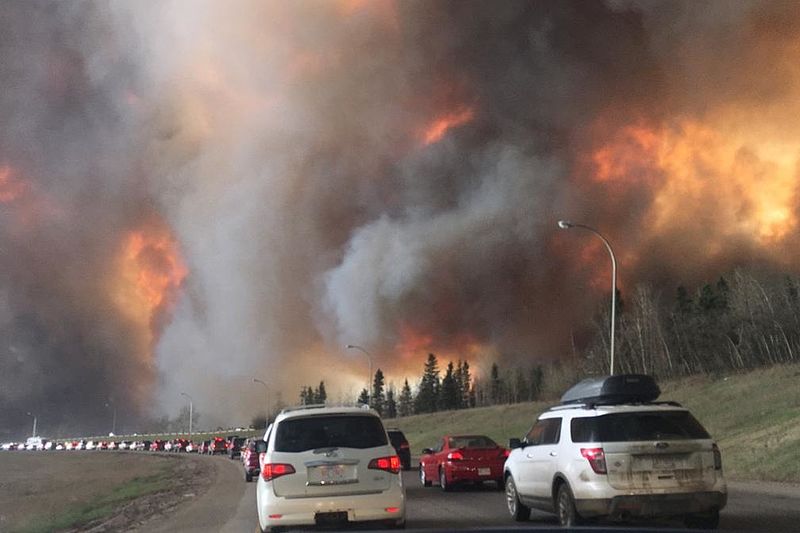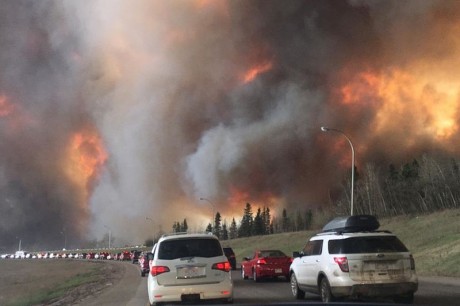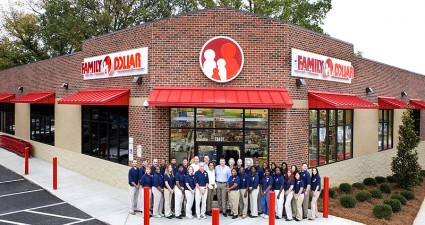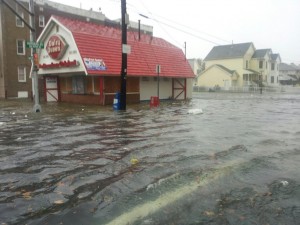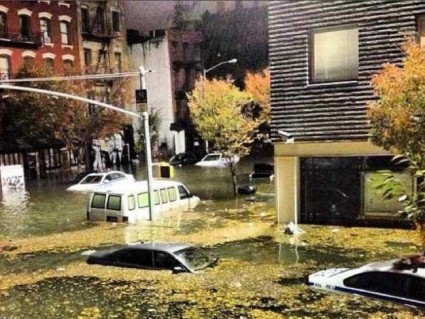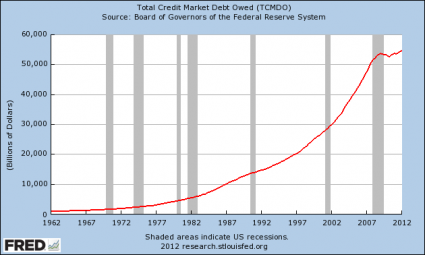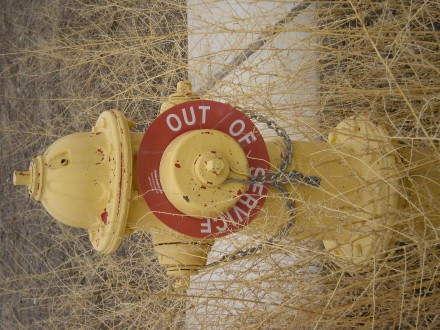 What in the world is China up to? Over the past several years, the Chinese government and large Chinese corporations (which are often at least partially owned by the government) have been systematically buying up businesses, homes, farmland, real estate, infrastructure and natural resources all over America. In some cases, China appears to be attempting to purchase entire communities in one fell swoop. So why is this happening? Is this some form of “economic colonization” that is taking place? Some have speculated that China may be intending to establish “special economic zones” inside the United States modeled after the very successful Chinese city of Shenzhen. Back in the 1970s, Shenzhen was just a very small fishing village, but now it is a sprawling metropolis of over 14 million people. Initially, these “special economic zones” were only established within China, but now the Chinese government has been buying huge tracts of land in foreign countries such as Nigeria and establishing special economic zones in those nations. So could such a thing actually happen in America? Well, according to Dr. Jerome Corsi, a plan being pushed by the Chinese Central Bank would set up “development zones” in the United States that would allow China to “establish Chinese-owned businesses and bring in its citizens to the U.S. to work.” Under the plan, some of the $1.17 trillion that the U.S. owes China would be converted from debt to “equity”. As a result, “China would own U.S. businesses, U.S. infrastructure and U.S. high-value land, all with a U.S. government guarantee against loss.” Does all of this sound far-fetched? Well, it isn’t. In fact, the economic colonization of America is already far more advanced than most Americans would dare to imagine.
What in the world is China up to? Over the past several years, the Chinese government and large Chinese corporations (which are often at least partially owned by the government) have been systematically buying up businesses, homes, farmland, real estate, infrastructure and natural resources all over America. In some cases, China appears to be attempting to purchase entire communities in one fell swoop. So why is this happening? Is this some form of “economic colonization” that is taking place? Some have speculated that China may be intending to establish “special economic zones” inside the United States modeled after the very successful Chinese city of Shenzhen. Back in the 1970s, Shenzhen was just a very small fishing village, but now it is a sprawling metropolis of over 14 million people. Initially, these “special economic zones” were only established within China, but now the Chinese government has been buying huge tracts of land in foreign countries such as Nigeria and establishing special economic zones in those nations. So could such a thing actually happen in America? Well, according to Dr. Jerome Corsi, a plan being pushed by the Chinese Central Bank would set up “development zones” in the United States that would allow China to “establish Chinese-owned businesses and bring in its citizens to the U.S. to work.” Under the plan, some of the $1.17 trillion that the U.S. owes China would be converted from debt to “equity”. As a result, “China would own U.S. businesses, U.S. infrastructure and U.S. high-value land, all with a U.S. government guarantee against loss.” Does all of this sound far-fetched? Well, it isn’t. In fact, the economic colonization of America is already far more advanced than most Americans would dare to imagine.
So how in the world did we get to this point? A few decades ago, the United States was the unchallenged economic powerhouse of the world and China was essentially a third world country.
So what happened?
Well, we entered into a whole bunch of extremely unfavorable “free trade” agreements, and countries such as China began to aggressively use “free trade” as an economic weapon against us.
Over the past decade, we have lost tens of thousands of businesses and millions of jobs to China. When the final numbers for 2012 come out, our trade deficit with China for the year will be well over 300 billion dollars, and that will be the largest trade deficit that one country has had with another country in the history of the world.
Overall, the U.S. has run a trade deficit with China over the past decade that comes to more than 2.3 trillion dollars. That 2.3 trillion dollars could have gone to U.S. businesses and U.S. workers, and in turn taxes would have been paid on all of that money. But instead, all of that money went to China.
Rather than just sitting on all of that money, China has been lending much of it back to us – at interest. We now owe China more than a trillion dollars, and our politicians are constantly pleading with China to lend more money to us so that we can finance our exploding debt.
Today, the U.S. government pays China approximately 100 million dollars a day in interest on the debt that we owe them. Those that say that the U.S. debt “does not matter” are being incredibly foolish.
So thanks to our massive trade deficit and our exploding national debt, China is systematically getting wealthier and the United States is systematically getting poorer.
And now China is starting to use a lot of that wealth to aggressively expand their power and influence around the globe.
But isn’t it more than a bit far-fetched to suggest that China may be planning to establish Chinese cities and special economic zones in America?
Not really.
Just look at what has already happened up in Canada. It is well-known that the Chinese population of Vancouver, Canada has absolutely exploded in recent years. In fact, the Vancouver suburb of Richmond is now approximately half Chinese. The following is an excerpt from a BBC article…
Richmond is North America’s most Asian city – 50% of residents here identify themselves as Chinese. But it’s not just here that the Chinese community in British Columbia (BC) – some 407,000 strong – has left its mark. All across Vancouver, Chinese-Canadians have helped shape the local landscape.
A similar thing is happening in many communities along the west coast of the United States. In fact, Chinese citizens purchased one out of every ten homes that were sold in the state of California in 2011.
But in other areas of the United States, the Chinese are approaching things much more systematically.
For example, as I have written about previously, a Chinese group identified as “Sino-Michigan Properties LLC” has purchased 200 acres of land near the town of Milan, Michigan. Their stated goal is to build a “China City” that has artificial lakes, a Chinese cultural center and hundreds of housing units for Chinese citizens.
In other instances, large chunks of real estate in major U.S. cities that are down on their luck are being snapped up by Chinese investors. Just check out what a Fortune article from a while back says has been happening over in Toledo, Ohio…
In March 2011, Chinese investors paid $2.15 million cash for a restaurant complex on the Maumee River in Toledo, Ohio. Soon they put down another $3.8 million on 69 acres of newly decontaminated land in the city’s Marina District, promising to invest $200 million in a new residential-commercial development. That September, another Chinese firm spent $3 million for an aging hotel across a nearby bridge with a view of the minor league ballpark.
Toledo is being promoted to Chinese investors as a “5-star logistics region“. From Toledo it is very easy to get to Chicago, Detroit, Cleveland, Pittsburgh, Columbus and Indianapolis…
With a population of 287,000, Toledo is only the fourth largest city in Ohio, but it lies at the junction of two important highways — I-75 and I-80/90. “My vision is to make Toledo a true international city,” Toledo’s Mayor Mike Bell told the Toledo Blade.
But some of these deals appear to be about far more than just making “investments”. According to the Idaho Statesman, a Chinese company known as Sinomach (which is actually controlled by the Chinese government) was actually interested in developing a 50 square mile self-sustaining “technology zone” south of the Boise airport…
A Chinese national company is interested in developing a 10,000- to 30,000-acre technology zone for industry, retail centers and homes south of the Boise Airport.
Officials of the China National Machinery Industry Corp. have broached the idea — based on a concept popular in China today — to city and state leaders.
The article suggested that this “technology zone” would be modeled after similar projects that already exist in China, and that Chinese officials were conducting similar negotiations with other U.S. states as well…
Sinomach is not looking only at Idaho.
The company sent delegations to Ohio, Michigan and Pennsylvania this year to talk about setting up research and development bases and industrial parks. It has an interest in electric transmission projects and alternative energy as well.
The technology zone proposal follows a model of science, technology and industrial parks in China — often fully contained cities with all services included.
Thankfully the deal in Idaho appears to be stalled for now, but could we soon see China establish special economic zones in other communities all around America?
The Chinese certainly do seem to be laying the groundwork for something. They have been voraciously gobbling up important infrastructure all over the country. The following comes from a recent American Free Press article…
In addition to already owning vital ports in Long Beach, Calif. and Boston, Mass., the China Ocean Shipping Company is eyeing major ports on the East Coast and Gulf of Mexico. China also owns access to ports at the entry and exit points of the Panama Canal.
And due to fiscal woes plaguing many American cities and states, U.S. legislators have been actively seeking out Chinese investors. In one of the worst cases, Baton Rouge, La., Mayor Kip Holden offered the Chinese government ownership and operating rights to a new toll way system if the Chinese would provide the funding to build it.
Does it make sense for the Chinese to own some of our most important ports?
Isn’t there a national security risk?
Sadly, there isn’t much of anything that our politicians won’t sell these days as long as someone is willing to flash a lot of cash.
The Chinese have also been busy buying up important real estate on the east coast as a recent Forbes article explained….
According to a recent report in the New York Times, investors from China are “snapping up luxury apartments” and are planning to spend hundreds of millions of dollars on commercial and residential projects like Atlantic Yards in Brooklyn. Chinese companies also have signed major leases at the Empire State Building and at 1 World Trade Center, the report said.
But it is not only just land and infrastructure that the Chinese have been buying up.
They have also been purchasing rights to vital oil and natural gas deposits all over the United States.
There have been two Chinese companies that have been primarily involved in this effort.
The first is the China National Offshore Oil Corporation (CNOOC). According to Wikipedia, CNOOC is 100 percent owned by the Chinese government…
CNOOC Group is a state-owned oil company, fully owned by the Government of the People’s Republic of China, and the State-Owned Assets Supervision and Administration Commission of the State Council (SASAC) performs the rights and obligations of shareholder on behalf of the government.
The second is Sinopec Corporation. Sinopec Group is the largest shareholder (approx. 75% ownership) in Sinopec Corporation. And as the Sinopec website tells us, Sinopec Group is fully owned by the Chinese government…
Sinopec Group, the largest shareholder of Sinopec Corp., is a super-large petroleum and petrochemical group incorporated by the State in 1998 based on the former China Petrochemical Corporation. Funded by the State, it is a State authorized investment arm and State-owned controlling company.
So whenever you see CNOOC or Sinopec, you can replace those names with the Chinese government. The Chinese government essentially runs both of those companies.
And as you can see from the following list compiled by the Wall Street Journal, those two companies have been extremely aggressive in buying up rights to oil and natural gas all over the nation…
Colorado: Cnooc gained a one-third stake in 800,000 acres in northeast Colorado and southeast Wyoming in a $1.27 billion pact with Chesapeake Energy Corp.
Louisiana: Sinopec has a one-third interest in 265,000 acres in the Tuscaloosa Marine Shale after a broader $2.5-billion deal with Devon Energy.
Michigan: Sinopec gained a one-third interest in 350,000 acres in a larger $2.5 billion deal with Devon Energy.
Ohio: Sinopec acquired a one-third stake in Devon Energy’s 235,000 Utica Shale acres in a larger $2.5 billion deal.
Oklahoma: Sinopec has a one-third interest in 215,000 acres in a broader $2.5 billion deal with Devon Energy.
Texas: Cnooc acquired a one-third interest in Chesapeake Energy’s 600,000 acres in the Eagle Ford Shale in a $2.16-billion deal.
Wyoming: Cnooc has a one-third stake in 800,000 acres in northeast Colorado and southeast Wyoming after a $1.27 billion pact with Chesapeake Energy. Sinopec gained a one-third interest in Devon Energy’s 320,000 acres as part of a larger $2.5 billion deal.
Gulf of Mexico: Cnooc Ltd. separately acquired minority stakes in some of Statoil ASA’s leases as well as six of Nexen Inc.’s deep-water wells.
So why is the U.S. government allowing this?
That is a very good question.
For a nation that purports to be pursuing “energy independence”, we sure do have a funny way of going about things.
Unfortunately, the sad truth is that China is absolutely mopping the floor with the United States on the global economic stage. China is rising and America is in an advanced state of decline. Global economic power has shifted dramatically and most Americans still don’t understand what has happened.
The following are 44 more signs of how dominant the economy of China has become…
1. A Chinese firm recently made a $2.6 billion offer to buy movie theater chain AMC.
2. A different Chinese firm made a $1.8 billion offer to buy aircraft maker Hawker Beechcraft.
3. In December it was announced that a Chinese group would be purchasing AIG’s plane leasing unit for $4.23 billion.
4. It was recently announced that the Federal Reserve will now allow Chinese banks to buy up American banks.
5. A $190 million bridge project up in Alaska was awarded to a Chinese firm.
6. A $400 million contract to renovate the Alexander Hamilton bridge in New York was awarded to a Chinese firm.
7. A $7.2 billion contract to construct a new bridge between San Francisco and Oakland was awarded to a Chinese firm.
8. The uniforms for the U.S. Olympic team were made in China.
9. 85 percent of all artificial Christmas trees are made in China.
10. The new World Trade Center tower is going to include glass that has been imported from China.
11. The new Martin Luther King memorial on the National Mall was made in China.
12. In 2001, American consumers spent 102 billion dollars on products made in China. In 2011, American consumers spent 399 billion dollars on products made in China.
13. The United States spends about 4 dollars on goods and services from China for every one dollar that China spends on goods and services from the United States.
14. According to the New York Times, a Jeep Grand Cherokee that costs $27,490 in the United States costs about $85,000 in China thanks to all the tariffs.
15. The Chinese economy has grown 7 times faster than the U.S. economy has over the past decade.
16. The United States has lost a staggering 32 percent of its manufacturing jobs since the year 2000.
17. The United States has lost an average of 50,000 manufacturing jobs per month since China joined the World Trade Organization in 2001.
18. Overall, the United States has lost a total of more than 56,000 manufacturing facilities since 2001.
19. According to the Economic Policy Institute, America is losing half a million jobs to China every single year.
20. Between December 2000 and December 2010, 38 percent of the manufacturing jobs in Ohio were lost, 42 percent of the manufacturing jobs in North Carolina were lost and 48 percent of the manufacturing jobs in Michigan were lost.
21. In 2010, China produced more than twice as many automobiles as the United States did.
22. Since the auto industry bailout, approximately 70 percent of all GM vehicles have been built outside the United States.
23. After being bailed out by U.S. taxpayers, General Motors is currently involved in 11 joint ventures with companies owned by the Chinese government. The price for entering into many of these “joint ventures” was a transfer of “state of the art technology” from General Motors to the communist Chinese.
24. Back in 1998, the United States had 25 percent of the world’s high-tech export market and China had just 10 percent. Ten years later, the United States had less than 15 percent and China’s share had soared to 20 percent.
25. The United States has lost more than a quarter of all of its high-tech manufacturing jobs over the past ten years.
26. China’s number one export to the U.S. is computer equipment.
27. The number one U.S. export to China is “scrap and trash”.
28. The U.S. trade deficit with China is now more than 28 times larger than it was back in 1990.
29. Back in 1985, the U.S. trade deficit with China was just 6 million dollars for the entire year. For the month of November 2012 alone, the U.S. trade deficit with China was 28.9 billion dollars.
30. China now consumes more energy than the United States does.
31. China is now the leading manufacturer of goods in the entire world.
32. China uses more cement than the rest of the world combined.
33. China is now the number one producer of wind and solar power on the entire globe.
34. Today, China produces nearly twice as much beer as the United States does.
35. Right now, China is producing more than three times as much coal as the United States does.
36. China now produces 11 times as much steel as the United States does.
37. China produces more than 90 percent of the global supply of rare earth elements.
38. China is now the number one supplier of components that are critical to the operation of U.S. defense systems.
39. A recent investigation by the U.S. Senate Committee on Armed Services found more than one million counterfeit Chinese parts in the Department of Defense supply chain.
40. 15 years ago, China was 14th in the world in published scientific research articles. But now, China is expected to pass the United States and become number one very shortly.
41. China now awards more doctoral degrees in engineering each year than the United States does.
42. According to one study, the Chinese economy already has roughly the same amount of purchasing power as the U.S. economy does.
43. According to the IMF, China will pass the United States and will become the largest economy in the world in 2016.
44. Nobel economist Robert W. Fogel of the University of Chicago is projecting that the Chinese economy will be three times larger than the U.S. economy by the year 2040 if current trends continue.
Without the “globalization” of the world economy, none of this would have ever happened. But instead of admitting our mistakes and fixing them, our politicians continue to press for even more “free trade” and even more integration with communist nations such as China.
In fact, according to Dr. Jerome Corsi, the U.S. government has already set up 257 “foreign trade zones” all over America. These “foreign trade zones” are apparently given “special U.S. customs treatment” and are used to promote “free trade”…
Corsi noted that the U.S. government has created 257 foreign trade zones, or FTZs, throughout the United States, designed to extend special U.S. customs treatment to U.S. plants engaged in international-trade-related activities.
The FTZs tend to be located near airports, with easy access into the continental NAFTA and WTO multi-modal transportation systems being created to move free-trade goods cheaply, quickly and efficiently throughout the continent of North America.
“There is nothing in the U.S. government’s description of FTZs that would prevent a foreign government, like China, from operating a shell U.S. company that is in reality owned and financed by the Chinese government and operated through a Chinese government-owned corporation,” Corsi wrote.
Sadly, we are probably going to see a whole lot more of this in the years ahead.
According to Corsi, a professor of economics at Tsighua University in Beijing named Yu Qiao has suggested the following plan as a way to transform the debt that the United States owes China into something more “tangible”…
- China would negotiate with the U.S. government to create a “crisis relief facility,” or CRF. The CRF “would be used alongside U.S. federal efforts to stabilize the banking system and to invest in capital-intensive infrastructure projects such as high-speed railroad from Boston to Washington, D.C.
- China would pool a portion of its holdings of Treasury bonds under the CFR umbrella to convert sovereign debt into equity. Any CFR funds that were designated for investment in U.S. corporations would still be owned and managed by U.S. equity holders, with the Asians holding minority equity shares “that would, like preferred stock, be convertible.”
- The U.S. government would act as a guarantor, “providing a sovereign guarantee scheme to assure the investment principal of the CRF against possible default of targeted companies or projects”.
- The Federal Reserve would set up a special account to supply the liquidity the CRF would require to swap sovereign debt into industrial investment in the United States.
Apparently the Bank of China really likes this plan and would like to see something like this implemented.
In the years ahead, perhaps many of you will end up working in a “special economic zone” for a Chinese company on a project that is being financially guaranteed by the U.S. government.
If that sounds like a form of slavery to you, the truth is that you are probably not too far off the mark.
The borrower is the servant of the lender, and we should have never allowed ourselves to get into so much debt.
Now we will pay the price.
To get an idea of how much the world has changed in recent years, just check out this incredible photo which contrasts the decline of Detroit over the years with the amazing rise of Shanghai, China.
Things did not have to turn out this way. Unfortunately, we made decades of incredibly foolish decisions and we wrecked the greatest economic machine that the world has ever seen.
Now the future for America looks really bleak.
Or could it be that I am being too pessimistic? Please feel free to post a comment with your thoughts below…
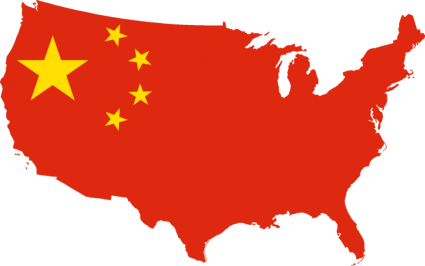
 If the U.S. economy is performing well, then why can’t 51 million households in the United States “afford basics like rent and food”. A stunning new report that was just put out by the United Way ALICE Project shows that the gap between the wealthy and the poor in this country is perhaps the biggest that it has been in any of our lifetimes. In some of the wealthiest areas of the nation, homes are now selling for up to 100 million dollars, but meanwhile tens of millions of families are barely scraping by from month to month. Many believe that this growing “inequality gap” is setting the stage for major societal problems.
If the U.S. economy is performing well, then why can’t 51 million households in the United States “afford basics like rent and food”. A stunning new report that was just put out by the United Way ALICE Project shows that the gap between the wealthy and the poor in this country is perhaps the biggest that it has been in any of our lifetimes. In some of the wealthiest areas of the nation, homes are now selling for up to 100 million dollars, but meanwhile tens of millions of families are barely scraping by from month to month. Many believe that this growing “inequality gap” is setting the stage for major societal problems.
